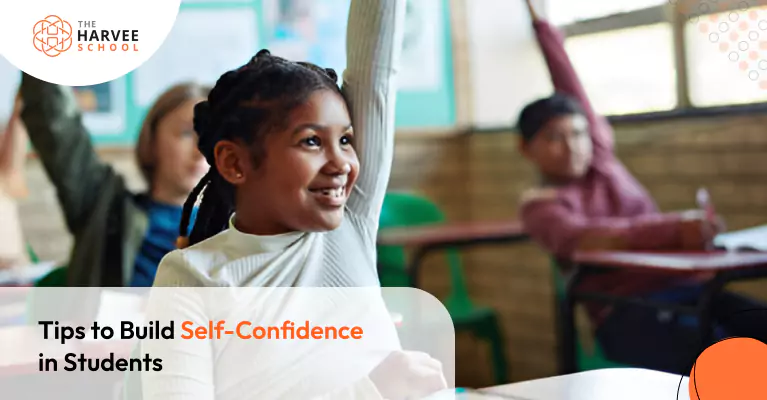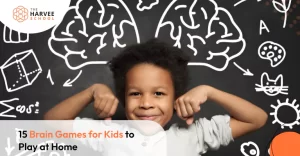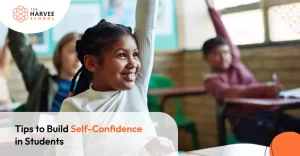Tips to Build Self-Confidence in Students
Helping children believe in themselves is one of the most important things parents and teachers can do. When kids feel confident, they are more willing to try new things, speak up in class, and bounce back from mistakes.
But not all students are naturally confident. The good news? Confidence can be built with the right support.
Every child deserves to feel capable and proud of who they are. These confidence building ideas will help students to develop a strong sense of self.
Give Small Responsibilities
Kids feel proud when they’re trusted to do important things. Giving students age-appropriate responsibilities helps them feel capable and needed.
- In Class: Let students be in charge of handing out papers, organizing supplies, or leading the line.
- At Home: Let your child pack their school bag, help set the table, or take care of a pet.
When kids succeed at these tasks, they feel more confident to take on bigger challenges too.
Praise the Effort, Not Just the Result
Instead of saying, “You’re so smart,” say, “I can see you worked really hard on that.” This helps kids understand that effort leads to success, not just talent.
- Example: “You didn’t give up, even when the math problem was tricky. Great job sticking with it!”
- Why It Works: It teaches children that making mistakes is okay and learning takes time.
This mindset helps them try again without fear of failure.
Help Kids Set Simple Goals
Big goals like “get good at math” can feel scary. Help students break big goals into small, clear steps they can achieve one at a time.
- In School: “Finish this worksheet without rushing,” or “Learn 10 new spelling words this week.”
- At Home: “Read one chapter each night,” or “Finish homework before TV time.”
Checking off each small goal builds a sense of achievement, building their confidence.
Let Them Make Choices
Giving students choices helps them feel in control and respected. Small decisions help build big confidence.
- In School: “Do you want to write your story with a pen or pencil?” or “Which book would you like to read today?”
- At Home: “Do you want to do homework before dinner or after?” or “Which shirt is today’s superhero outfit?”
Making decisions helps children feel more independent and capable.
Encourage Group Work and Team Activities
Working with others teaches cooperation and helps students feel like they belong. It also gives shy students a safe way to participate.
- Examples: Group art projects, science experiments, peer reading, or classroom games.
- Bonus Tip: Mix up the groups so kids get to work with different classmates over time.
Feeling included and supported by peers builds confidence and friendships too.
Teach Kids How to Handle Mistakes
Many students lose confidence after making mistakes. But mistakes are normal—and helpful!
- What to Say: “Mistakes help your brain grow,” or “What can we learn from this?”
- In Class: Share stories of famous people who failed before succeeding (like Thomas Edison or JK Rowling).
- At Home: Share a time when you made a mistake and what you did to make it right.
When kids learn that mistakes are okay, they stop fearing them and start learning from them.
Celebrate Progress, Not Just Perfection
Don’t wait for perfect results to give praise. Celebrate when students improve, even if just a little.
- Examples: “You read two more pages than yesterday!” or “You were more focused during this lesson!”
- Tip: Use stickers, charts, or simple notes to show that progress is noticed.
Kids feel motivated when they know their hard work is being seen.
Be a Role Model of Confidence
Children learn by watching the adults in their lives. If you show confidence and handle problems calmly, they’ll learn to do the same.
- In School: If a lesson doesn’t go as planned, say, “It’s okay! Let’s try another way.”
- At Home: Say, “This is tricky, but I believe I can figure it out.”
When adults stay positive and believe in themselves, kids pick up that same energy.
Encourage Positive Self-Talk
Sometimes kids talk to themselves in a negative way: “I can’t do this,” or “I’m not good at anything.” Help them change those thoughts.
- Teach Them to Say:
- “I’ll try my best!”
- “Mistakes help me learn.”
- “I am getting better every day.”
- “I’ll try my best!”
Practicing positive self-talk helps students believe in their own ability to grow and succeed.
Celebrate Every Child’s Strengths
Every child is good at something; drawing, dancing, solving puzzles, helping others, or making people laugh. Help them discover and celebrate those strengths.
- Create ‘All About Me’ Projects in school.
- Let Them Lead: Ask them to teach you something they know like a dance move or a new word.
- Boost Their Identity: Display their work proudly at home or in the classroom.
When children see they have something special, their confidence blossoms.
Final Thoughts
Self-confidence doesn’t grow overnight. But with love, patience, and the right strategies, every child can learn to believe in themselves. Whether in the classroom or at home, these tips build self-confidence in students and will help children grow into strong, independent, and happy learners.
When kids feel confident, they’re not just ready for school—they’re ready for life.






